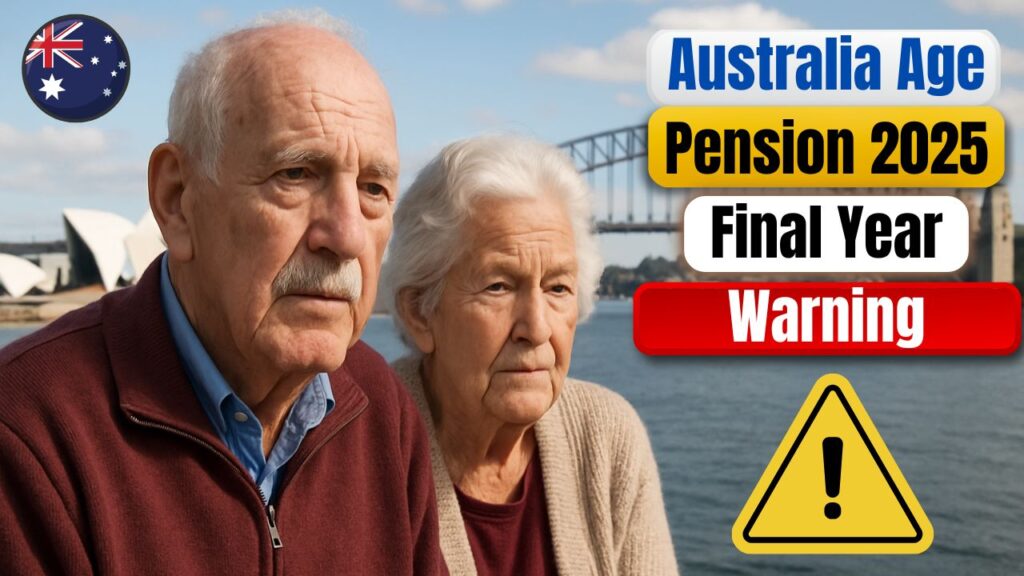Australia’s Age Pension has been a cornerstone of retirement support for over 116 years, helping millions of seniors live with dignity and financial security. However, in 2025, growing speculation surrounds whether this long-standing payment system could face its final year or undergo major reform. With inflation, population ageing, and policy pressure on Canberra’s budget, retirees across the country are anxious about what’s next. The government has hinted at adjustments in eligibility age, payment rates, and means tests, sparking debate on the future of the Age Pension and the sustainability of senior benefits.

Australia Age Pension History and Importance for Seniors
Introduced in 1909, the Age Pension has evolved to reflect Australia’s commitment to social equity. Over the past century, it has adapted to demographic and economic challenges, ensuring that citizens who have contributed to society receive financial support after retirement. Currently, the pension is available to Australians aged 67 or older who meet specific income and asset criteria. It provides vital monthly payments that help cover living costs, healthcare, and everyday needs. The 2025 discussions around potential reforms have heightened awareness about the role this pension plays in supporting senior Australians nationwide.
Possible 2025 Reforms: Eligibility, Rates, and Sustainability
Government insiders have hinted at new Age Pension rule changes to balance sustainability and affordability. These may include revising the retirement age to 68 by 2026, updating income thresholds, or linking payments more closely to inflation. There’s also speculation that wealthier retirees could see reduced benefits under tighter means testing. While no final decision has been confirmed, financial experts warn seniors to prepare for future adjustments. The Department of Social Services (DSS) and Services Australia continue to emphasize that the Age Pension will remain a key welfare pillar, but reforms are likely aimed at future-proofing the system.
Impact of Possible Changes on Retirees and Future Applicants
If the 2025 Age Pension reforms proceed, current beneficiaries may experience minor payment adjustments, while new applicants could face stricter eligibility requirements. This shift could particularly impact part-pensioners and retirees with moderate assets. Experts recommend retirees reassess their financial planning, including superannuation and private savings, to minimize any reduction in payments. Some advocacy groups argue that pension increases are needed to match the rising cost of living, especially for seniors in remote or low-income communities. Regardless of changes, the government insists that no Australian senior will be left unsupported during the transition.

2025 Age Pension Eligibility Criteria and Payment Summary
To help retirees plan for 2025, here’s an updated overview of the current Age Pension criteria, payment amounts, and key eligibility points. These figures reflect the latest official updates as of October 2025, with any additional changes expected in the May 2025 Budget Review. Seniors are advised to stay informed through Services Australia for accurate updates and renewal reminders.
| Category | Eligibility Details |
|---|---|
| Minimum Age | 67 years (may rise to 68 in 2026) |
| Single Pension Rate (per fortnight) | $1,116.30 including supplements |
| Couples Combined Rate (per fortnight) | $1,682.80 including supplements |
| Income Limit (Single) | $204 per fortnight before reduction |
| Asset Test (Homeowner, Single) | Up to $301,750 excluding home |
| Payment Agency | Services Australia (Centrelink) |
FAQs
Q1: What is the current Age Pension age in Australia?
A: As of 2025, it is 67 years, but may rise to 68 in 2026.
Q2: Will Age Pension payments stop in 2025?
A: No official confirmation; discussions are about reforms, not cancellation.
Q3: How much can single pensioners receive in 2025?
A: Around $1,116.30 per fortnight, including supplements.
Q4: Who manages Age Pension payments in Australia?
A: Centrelink under the Department of Social Services (DSS).






